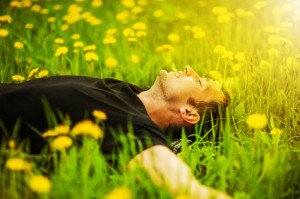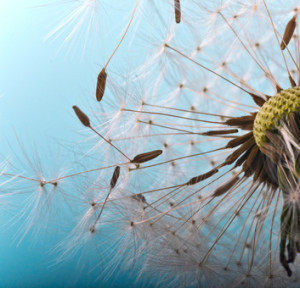WHAT IS POLLEN?
Pollen is the reproductive element of flowering plants. The microscopic grains are produced by the stamen and are dispersed like powder into the air during flowering.
- Springs is the full wild and grown gramineae season. This is a large family of herbaceous plants, the ear flowers of which are tiny. It includes grass in lawns, prairies, hay and fields of cereals.
- From spring, summer and up to the beginning of Autumn, it is the long season of successive pollination for numerous hardy herbaceous plants (around 50,000 species), some cultivated but most wild. They flower here and there in the countryside and in towns. They are often called “weeds” when they invade crops, gardens, lawns and other landscapes.
For each species, pollination depends on the geographic and weather conditions. Pollen borne by the wind, is mainly found outside, but can also enter homes and other indoor areas.
PRACTICAL TIPS FOR LIMITING EXPOSURE:
 No need to stay confined to home, however you can anticipate, and choose the place and time for your holidays, and you can take precautions:
No need to stay confined to home, however you can anticipate, and choose the place and time for your holidays, and you can take precautions:
- In your garden, diversify plantations by avoiding the most allergenic species (cypress, thuja, birch).
- If you go out without a hat, pollen can collect in your hair. Wash your hair before going to bed: this prevents you sleeping in pollen every night.
- Air your home, preferably early in the morning, late in the evening or when it is raining: allergens are less dispersed in the air at these times of the day.
- Avoid mowing the lawn yourself during the pollen season or wear protective glasses and a mask.
- Avoid drying your washing outside during the pollination period. Pollen collects in the washing and is then dispersed indoors.
- Avoid letting air into the car when travelling.
Source:
Agence française de sécurité sanitaire des produits de santé (AFSSAPS), Bien vous soigner avec des médicaments disponibles sans ordonnance, rhinite et conjonctivite allergiques de l’adulte, juin 2008.
(The French Agency for Sanitary Security of Health Products (AFSSAPS). Treating yourself with over-the-counter available medicines, adults’ allergic rhinitis and conjunctivitis, June 2008.)
http://ansm.sante.fr/var/ansm_site/storage/original/application/e25dc9b71ff4e765c75d85f804c1b2a1.pdf
